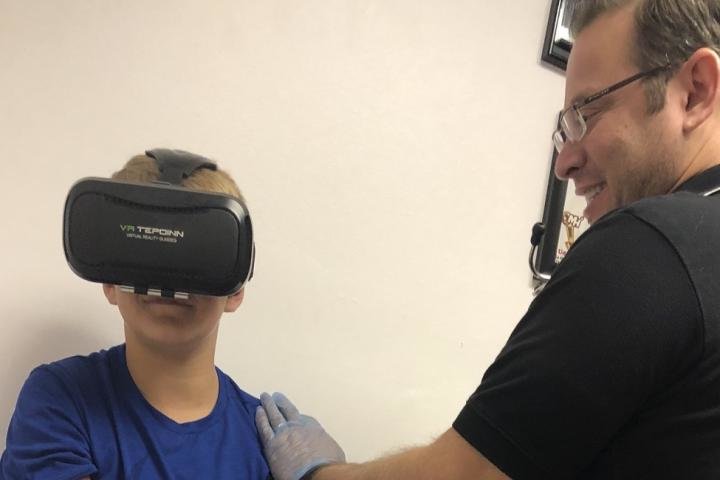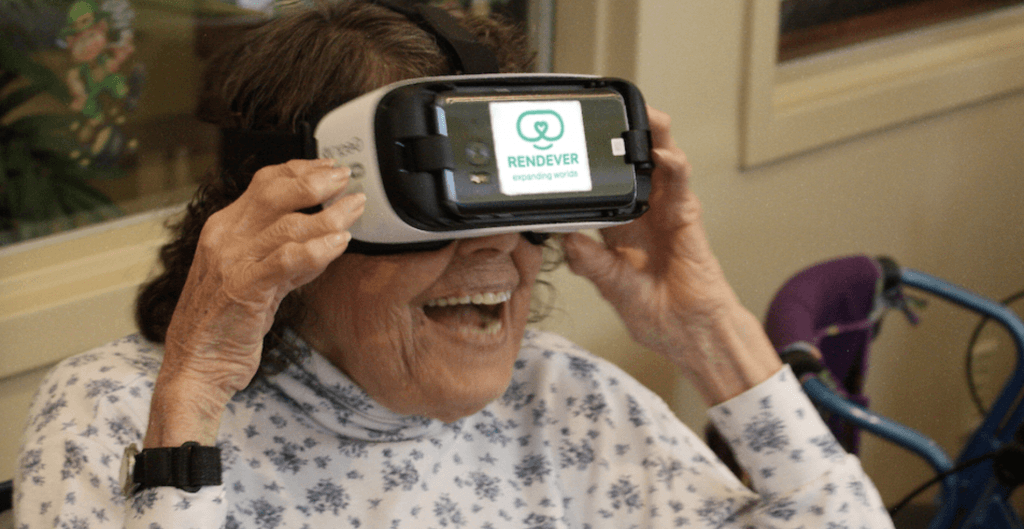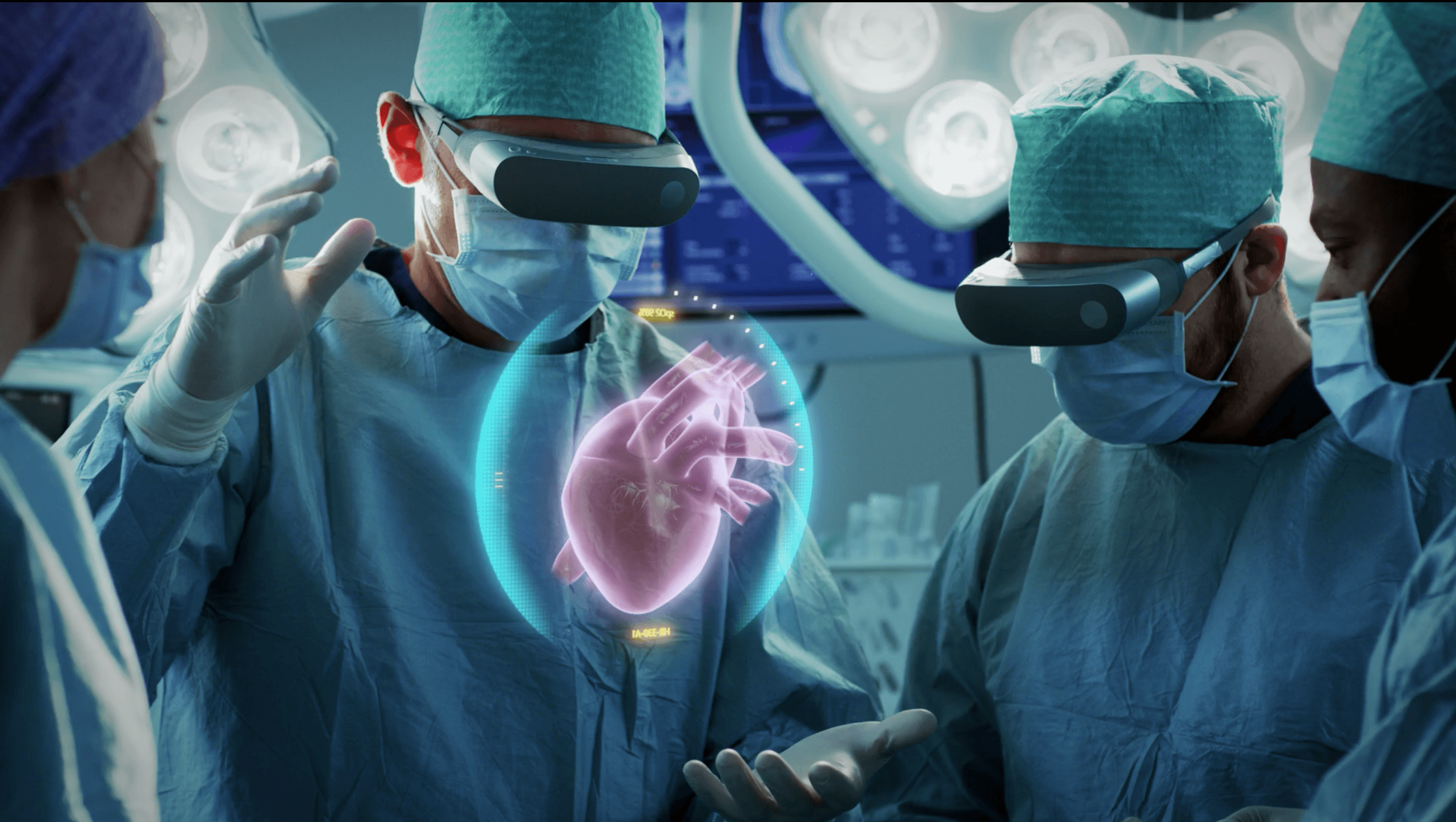VR & AR for Healthcare & Medicine
The healthcare industry has been experiencing a rapid growth in innovation. A large part of this is thanks to advances in technology over the last two decades. The digitalisation of medical records has streamlined the process of accessing information for healthcare providers. Since doing away with paper records for the most part, patient information and medical history is more easily retrievable. According to a study from the the University of Michigan, the shift from paper to electronic health records reduces the cost of outpatient care by 3%. These researchers estimated this as $5.14 in savings per patient each month. This ease of access of important information has also improved the speed and reliability of the medical profession, saving lives in the process.
Immersive tech is the latest innovation in technology that will transform the world of medicine and healthcare. Dr. Rafael Grossmann, the first surgeon to use Google Glass during a live surgery says, “Smart glasses, Augmented, Virtual and Mixed Reality will revolutionise the way we practice and teach medicine. Disrupting the way in which medical data and information flow, will decrease costs and medical errors, allowing for better care and less mortality”.
Training
Virtual Reality (VR) and Augmented Reality (AR) can improve the way healthcare providers are trained and educated by taking them away from their textbooks and immersing them in real life situations that they will have to deal with in the future. This immersive technology can also be used while on the job, helping doctors to diagnose and treat conditions more effectively than before.
Communication
Communication between healthcare providers and patients can be drastically improved by this technology. For doctors, explaining to a patient a complicated medical issue can be somewhat difficult. VR learning experiences can be provided by doctors to their patients. They will carefully explain the situation to the patient in an easy to understand manner and take them through what needs to be done to treat the condition. Pharma companies can use the same methods when explaining to patients how their medicines work against illnesses. Instead of just reading long information leaflets about the drug, patients can be shown exactly why it is important to take this medicine in an entertaining yet educational way. AR and VR also act as a powerful sales tool for pharmaceutical reps pitching their products to medical professionals.
Patient to doctor communication can also be improved through the use of AR. Patients can describe their symptoms better through augmented reality and it may eliminate the need to visit your doctor in person.
Healthcare professionals will have the ability to share their expertise with one another more easily than before. Through the use of AR, doctors will be able to communicate live with other healthcare providers (HCPs). Doctors can assist HCPs in real time by seeing the situation from the perspective of the person treating the patient. Quick diagnoses can be made and the more experienced doctor can guide the HCP step-by-step through the correct medical procedures.
Surgery
We all know that surgery is a difficult task that requires a lot of knowhow and precision. The use of AR and VR can make the job of the surgeon much easier. There has already been some minimal invasive surgeries performed with the assistance of AR. The use of 3D mapping and imagery enhances doctors’ understanding of complex anatomy so surgical procedures are more precise. Live data such as patient vital signs and x-rays can be displayed in augmented reality to surgeons wearing AR devices. This can allow the doctor to focus on what they are doing. Less experienced doctors will also have the ability to watch surgeries take place from the perspective of the surgeon, making it a valuable learning tool. It is still early days for AR and VR for surgery but the signs are very promising and it will likely be the norm within a few years, such are the benefits.
Patient Care & Education
Patient experience and education can be significantly enhanced through the use of VR and AR. Children in particular have benefitted introduction of immersive tech in medical care facilities. Virtual reality has successfully been used to lessen the fear, anxiety and even pain levels of children receiving vaccines. The capabilities of VR headsets mean that children can be transported to another world while procedures are being carried out. It works excellently as a relaxation and distraction tool to keep the child and their family as comfortable as possible.

The NHS have developed a MRI virtual reality experience specially designed for young patients. The experience of having an MRI scan can be a stressful one for even the bravest of adults. The immersive experience takes the user through every step of the scan procedure before they do it for real, so when the time comes get into the machine, it is not a brand new startling experience for the children.

It’s not just paediatric patients that are experiencing improvements in care thanks to immersive technology. Care homes for the elderly have started showing calming and peaceful scenes to dementia patients in VR. These tranquil scenes help create an effective distraction that allows healthcare professionals an alternative for altering patient stress levels with drugs. The communication and social features that VR can provide have also been used to challenge the isolation and loneliness felt by the elderly due to a loss of mobility. Shared VR experiences with fellow care patients can help combat that feeling of loneliness by sparking new conversations and memories. Customised experiences such as a VR tour of a dementia sufferers home or favourable vacation spot can help alleviate the stress felt by putting them in familiar surroundings. Virtual reality therapy works using a similar method of immersing patients in an environment that it specially designed to aid the treatment.
These are just a view examples of how immersive technology can revolutionise nearly every aspect of the healthcare and medical industry. As adoption of the technology continues; virtual reality, augmented reality and mixed reality can absolutely improve the quality of life for patients as well as the training, practices and communication methods of healthcare providers.

